| Phone / Voicemail / text 707-875-2911 | Visit our Showroom | About Us | E-Mail US | |||||
| Linda Sorensen Paintings .com |
Joshua Meador Collection |
Vintage Prints | ||||||
|
|||||||||||||||||||||||||||
 |
|
| Edward Hopper: A Look Back to a 2008 Exhibition at the Art Institute of Chicago by Daniel Rohlfing |
|
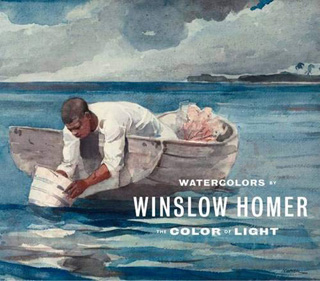 |
It was during the Spring of 2008, Linda and I attended two side-by-side exhibitions at the Art Institute of Chicago. One was simply entitled "Edward Hopper," and the other "Watercolors by Winslow Homer: The Color of Light." Below are some of the Edward Hopper paintings on exhibit. Next month, we'll feature works from the Winslow Homer exhibition. |
It was quite an event! Art lovers from across the nation and beyond flocked to Chicago. We found a low cost flight to Midway and a hotel deal at the Loop's famous Silversmith Hotel, just a short stroll to the Chicago Art Institute. |
|
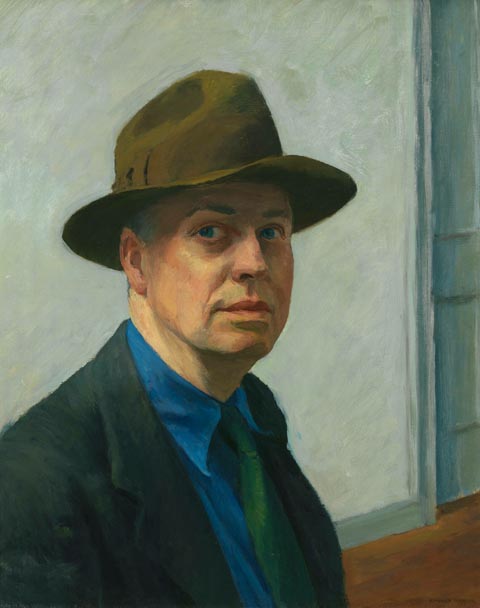 Edward Hopper, Self Portrait, 1925-30 Whitney Museum of American Art, New York |
 Edward Hopper, Self Portrait, 1903 Museum of Fine Arts, Boston |
|
|
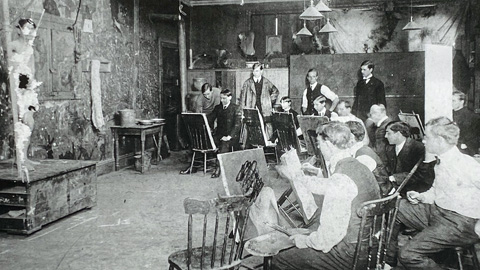 Robert Henri's drawing class at the New York School of Art, 1905. Somewhere in this photo's trek through history, someone considered themselves called upon to scratch out the nude model. |
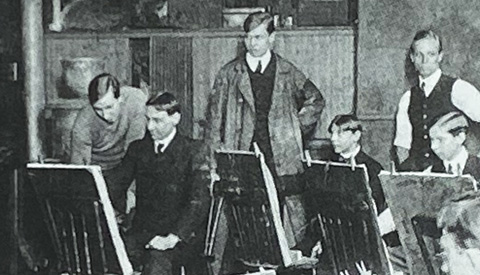 Zooming in on the photo to the left, here is Edward Hopper, the tall artist in the center. To his left are artist friends George Bellows (seated) and Rockwell Kent (standing). |
|
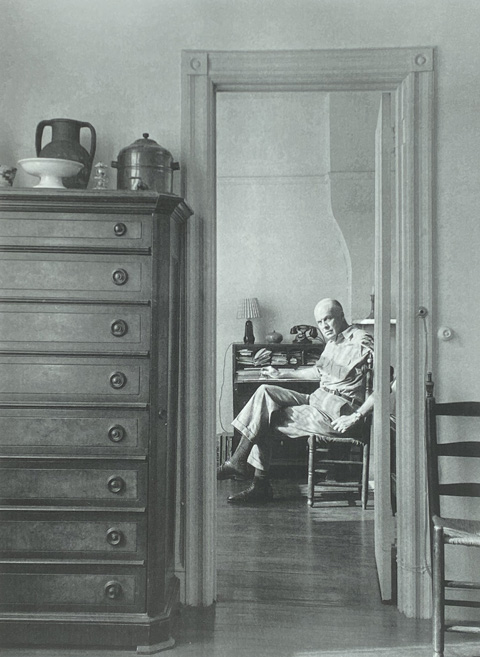 Photo by Arnold Newman Edward Hopper, 1945, Getty Images |
|
A 2007 show at Boston's Museum of Fine Arts dedicated to Hopper's work from 1925 to 1950 included100 paintings, watercolors and prints. Morley Safer reported on this exhibition, originally aired June 10, 2007. Carol Troyen, currator of the exhibition, discusses Hopper, |
Edward Hopper was born in 1882 in Nyack, New York. He lived to be 84 and died in Manhattan on May 15, 1967. |
| Soir Bleu, 1914 |
In 1914, Edward Hopper was a struggling unknown 32 year old artist. Relying on his memories of a Parisian outdoor cafe, Hopper composed Soir Bleu four years after his return from Paris. |
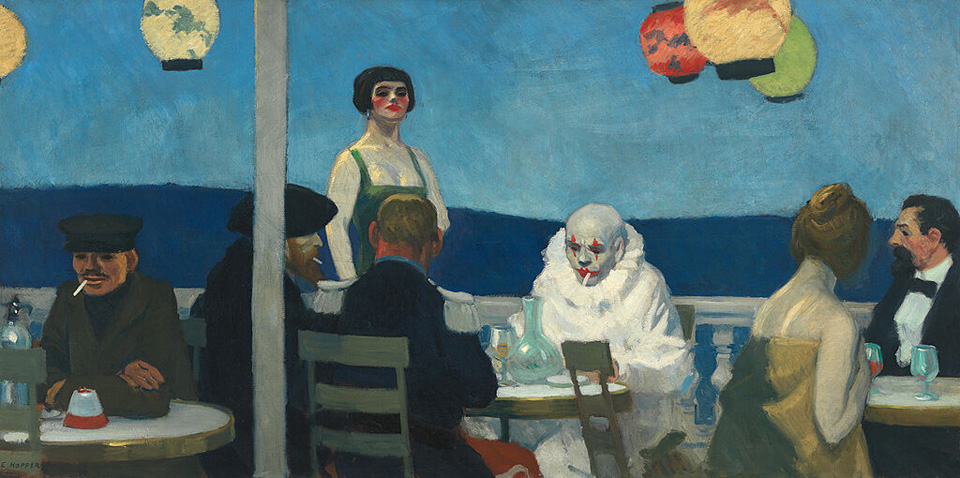 Edward Hopper, Soir Blue (Blue Evening), 1915, Whitney Museum of American Art, New York |
| New England Paintings | |
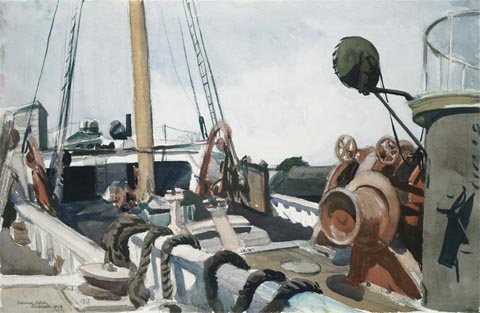 Edward Hopper, Deck of Beam Trawler, Glaucester, MA 1923 Museum of Fine Arts, Boston, Massachusetts |
Hopper painted Deck of Beam Trawler at the age of 41 in Gloucester, Massachusetts and continued to visit New England during the summers, escaping Manhattan's summer heat. |
 Edward Hopper, The Mansard Roof, 1923, Brooklyn Museum, Brooklyn, New York |
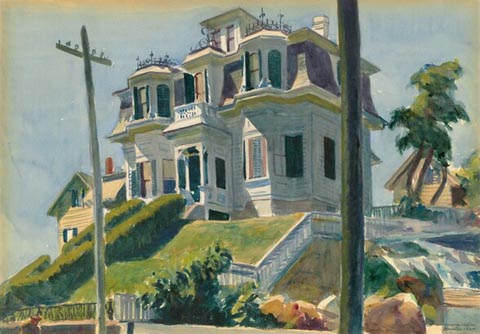 Edward Hopper, Haskell's House, 1924, National Gallery of Art, Washingtonl, D.C. |
Hopper's Lighthouse and Buildings, Portland Head is one of his most reproduced works. |
 Edward Hopper, Lighthouse and Buildings, Portland Head, 1927 Cape Elizabeth, Maine, Museum of Fine Arts, Boston, Massachusetts |
 Edward Hopper, Sun on Prospect Street, 1934 Gloucester, Massachusetts Cincinnati Museum, Cincinnati, Ohio |
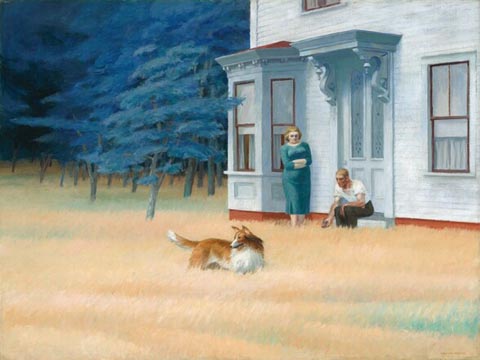 Edward Hopper, Cape Cod Evening, 1939 National Gallery of Art, Washington, D.C. |
|
|
 Edward Hopper, Seven A.M., 1948 Whitney Museum of American Art, New York |
 Edward Hopper, Second Story Sunlight, 1960 Whitney Museum of American Art, New York |
| New York paintings | |
 Edward Hopper, Summer Interior, 1909 Whitney Museum of American Art, New York |
 Edward Hopper, Night Shadows (Etching), 1921 Museum of Fine Arts, Boston, Massachusetts |
Summer Interior was painted in 1909 when Hopper would have been a young man of 27. The painting appears to be a private scene we should not have the privilege to observe. It is of a young woman in what appears to be a moment of despair. She's nude from the waist down. She appears to have allowed herself to slide down from the bed on a bedsheet. We see her seated on the floor, her arm supports her on the bed with her head down, hiding her face. It appears she may have had have had a lover's quarrel. After her lover left, in the aftermath, she is left alone gathering her feelings and thoughts. |
|
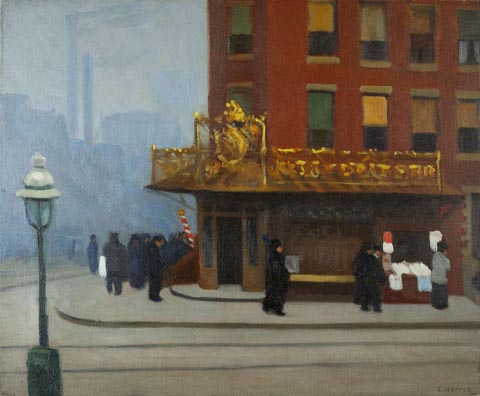 Edward Hopper, New York Corner or Corner Saloon, 1913 Private Collection |
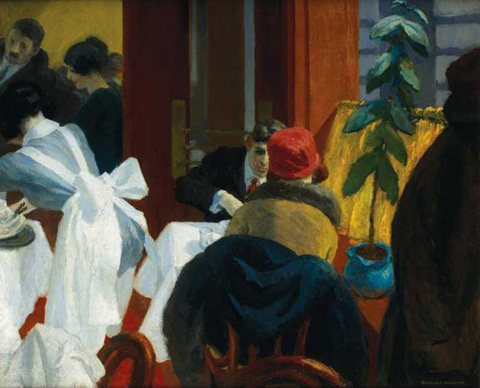 Edward Hopper, New York Restaurant, 1922 Muskegon Museum of Art, Muskegon, Michigan |
New York Corner (aka Corner Saloon) 1913 is an early work of Hopper. It has multiple nameless and unidentifiable figures standing on a corner in front of a stark red colored building with distant smokestacks in the smoky foggy distance. The painting shows the figures alone, not interacting, in a dismal urban setting. The season appears to be winter as the figures are wearing overcoats and hats. |
|
 Edward Hopper, Apartment Houses, 1923 Pennsylvania Academy of Fine Arts, Philadelphia, Pennsylvania |
 Edward Hopper, Sunday, 1926, The Phillips Collection, Washington, D.C. |
In Hopper's Apartment Houses, we are invited to peer through an open window of a bedroom situated at the corner of an apartment building. We see a rather plump maid making a bed. Just beyond we see another apartment building with a window with its partially drawn curtains. This neighboring apartment building is just a few feet beyond. This painting is a peek into a slice of American urban life, where people and their private lives take place in close crowded proximity to others pursuing their private lives. This is the theme in many of Hopper's paintings which he continued to produce the rest of his career. |
|
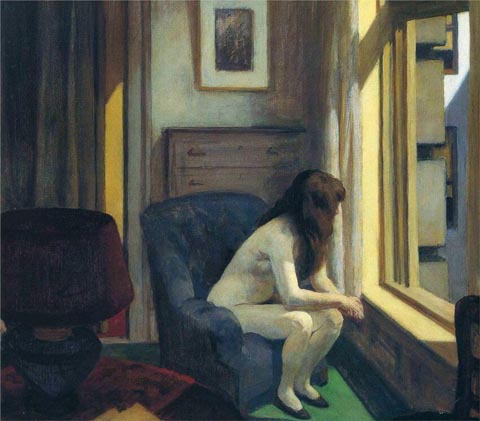 Edward Hopper, Eleven A.M., 1926 Hirshhorn Museum and Sculpture Garden, Washington D.C. |
 Edward Hopper, The City, 1927, The University of Arizona Museum of Art, Tempe, Arizona |
|
|
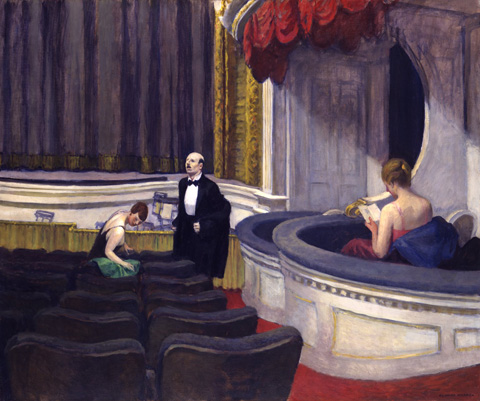 Edward Hopper, Two on the Aisle, 1927 Toledo Museum of Art, Toledo, Ohio |
 Edward Hopper, Automat, 1927, Des Moines Art Center, Des Moines, Iowa |
Two on the Aisle 1927 shows us the show before the show. We see a couple in formal dress, probably husband and wife, settling in their front orchestra seats before a performance. She's seated, adjusting her coat in her chair while her husband stands next to her in his tuxedo, peering up into something of interest in the balcony. Seated nearby in the side boxes is a woman in a red formal dress reading the printed program for the performance. None of the figures are interacting, just quietly passing the moments before the show. |
|
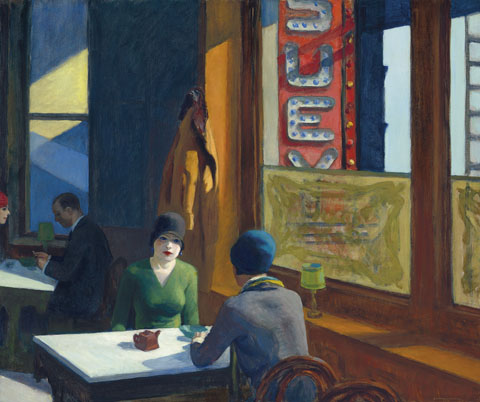 Edward Hopper, Chop Suey, 1929 collection of Barney A. Ebsworth former trustee of the St. Louis and Seattle Art Museums |
 Edward Hopper, Tables for Ladies, 1930 The Metropolitan Museum of Art, New York |
|
|
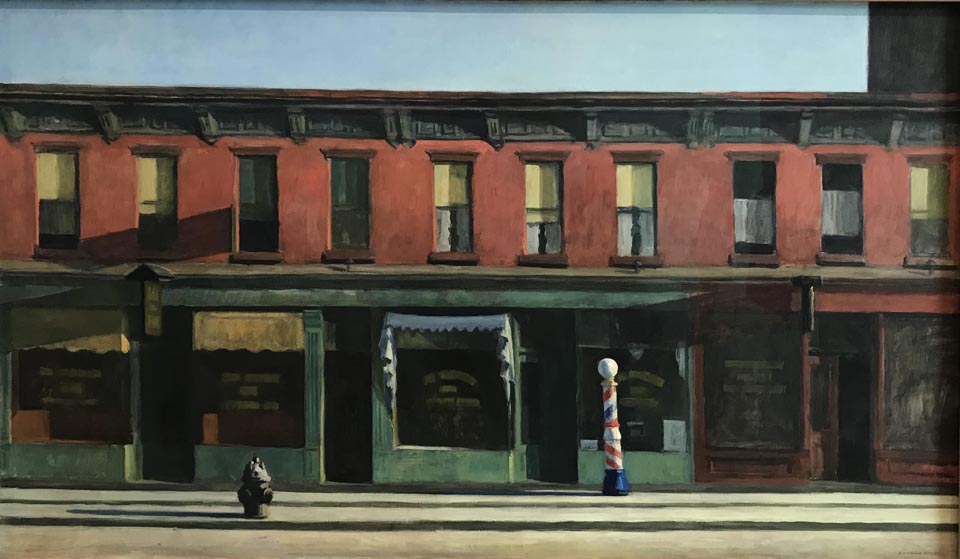 Edward Hopper, Early Sunday Morning, 1930, Whitney Museum of American Art, New York Edward Hopper, Early Sunday Morning, 1930, Whitney Museum of American Art, New York |
|
Hopper described Early Sunday Morning as "almost a literal translation of Seventh Avenue." The elements of the composition are reduced to the the absolute basics. Window lettering is illegible and any architectural ornamentation is loosely sketched. There are no figures, only hints of habitation, such as the different levels of the window shades. In New York, Seventh avenue runs north-south and the shadows would fall east-west. Hopper changed the natural direction of the shadows, consistent with his horizontal composition. |
|
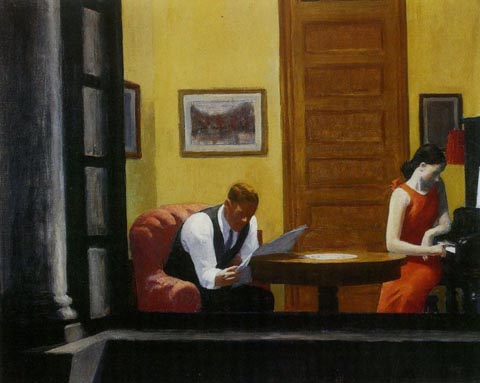 Edward Hopper, Room in New York, 1932 Sheldon Memorial Art Gallery, Lincoln, Nebraska |
 Edward Hopper, New York Movie, 1939 Museum of Modern Art, New York |
Room in New York shows a clean and simplified interior setting. A man and woman, dressed and ready to go out, are absorbed in their own solitary worlds, he in his newspaper and she fingering the keyboard of the piano. Wordlessly and separately, they pass the moments before their departure. |
|
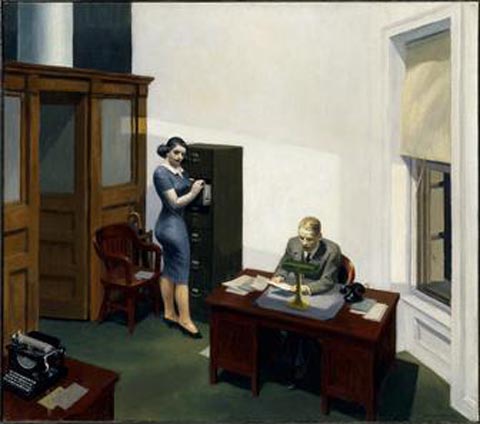 Edward Hopper, Office at Night,1940 Walker Art Center, Lowry Hill, Minneapolis, Minnesota |
 Edward Hopper, Girlie Show, 1941 collection of Fayez Sarofim |
|
|
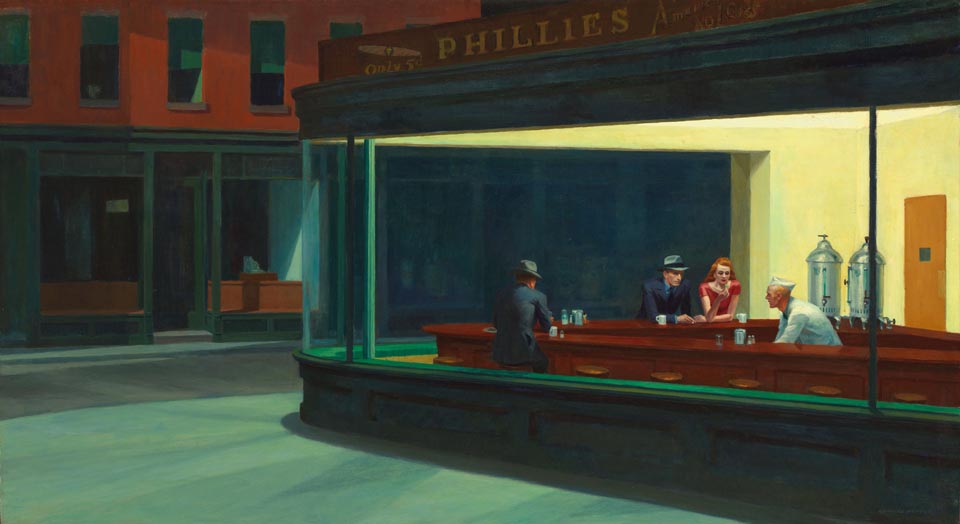 Edward Hopper, Nighthawks, 1942, The Art Institute of Chicago, Chicago, Illinois |
|
Hopper said of Nighthawks, “unconsciously, probably, I was painting the loneliness of a large city.” The composition is clean, no trash in the streets, no people, with empty storefront windows across the street. The harsh yellow light reflecting from the brightly lit yellow walls of the diner shows three late night wide awake coffee drinking customers, detached from one another. |
|
 Edward Hopper, Summertime, 1943 Delaware Art Museum, Wilmington, Delaware |
 Edward Hopper, Morning in a City, 1944 Williams College Museum of Art, Williamstown, Massachusetts |
Summertime was painted in the early years of World War II. After Pearl Harbor and Hitler's steam rolling over Europe, America was hitting back. After years of the Great Depression, America was full of resolve for winning the war, and for an ascendant period of prosperity. The young woman with a stylish see-through dress appears to be ready and waiting. It's Hopper's way of saying good times are on the horizon. |
|
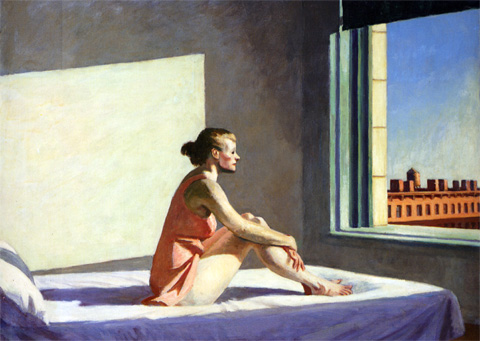 Edward Hopper, Morning Sun, 1952 Columbus Museum of Art, Columbus, Ohio |
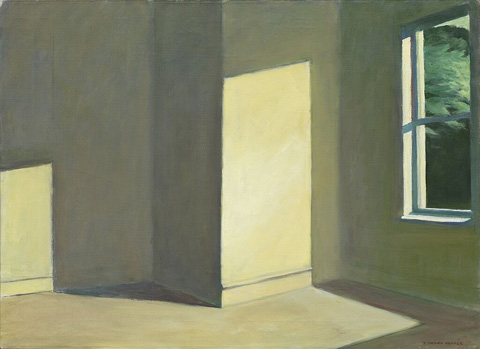 Edward Hopper, Sun in an Empty Room, 1963, Private Collection |
Morning Sun is similar to Morning in the City. Here, a woman dressed in a nightgown looks to the morning sun through an enormous window. A building with a long row of apartment windows is visible on the outside with a water tower beyond them. We're focused on the figure in this painting, but each of those apartments could be the location of a similar scene. The woman's posture is relaxed and she seems to be contemplatively looking toward her day. |
|
 Photo by George Platt Lynes, Edward Hopper, 1950 Archives of American Art |
 Photo by Bernice Abbott, Photo by Bernice Abbott, Edward Hopper, Greenwich Village, New York, 1949 The Art Institute of Chicago |
Both of these photo portraits are similar. They are of Edward Hopper, but not like classical portraits. They are more like still life paintings, with Hopper being but one of the subjects in the still life. Both of these scenes have a wood burning stove, a place of energy and warmth, both possess vertical, horizontal and angular lines. Hopper is solitary in both, seemingly serious but giving no clue to what he is pondering. It's much like his paintings with himself as the subject, a solitary person within a an unspectacular setting. |
|
| The Art Institute of Chcago's Exhibition page | Back to the Top | |
| Jon Blanchette 1908-1987 Northern California Painter, Carmel, Aptos & Mendocino |
|
The paintings below were done by Jon Blanchette, a mid century Northern California painter and teacher. All of the paintings below are offered for sale by Bodega Bay Heritage Gallery, and prices have been reduced. Just click on the images below to link to our Jon Blanchette page on our website. |
|
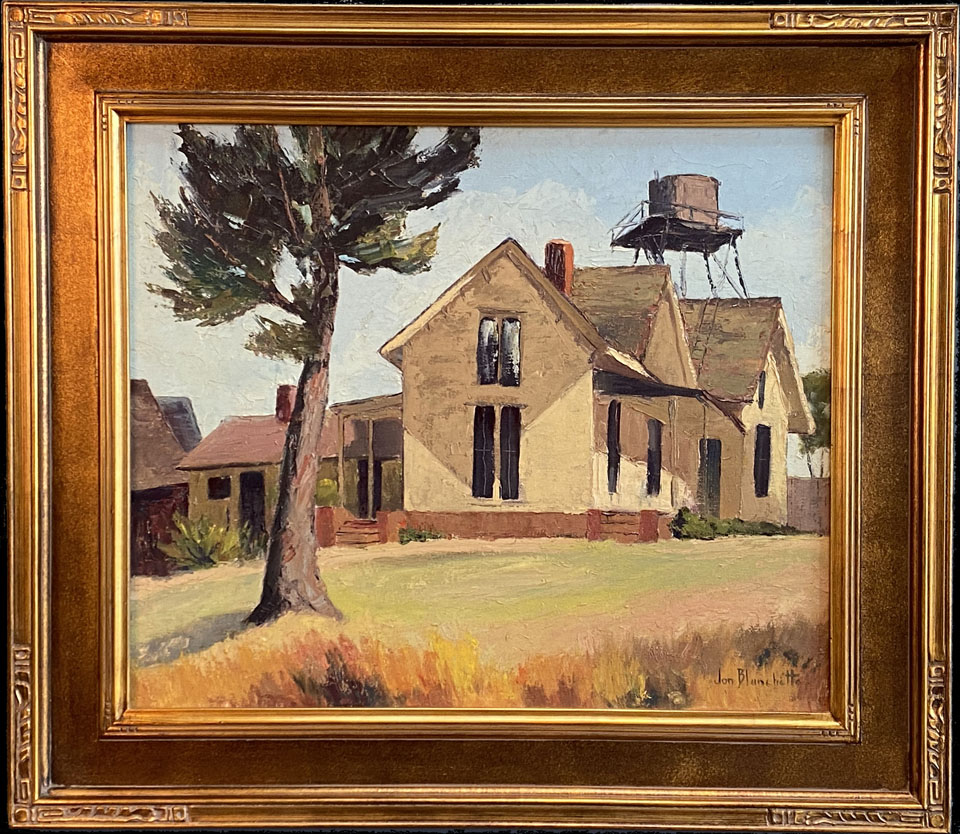 Our gallery's most "Hopper-esque" painting, Mendocino House by Jon Blanchette |
|
|
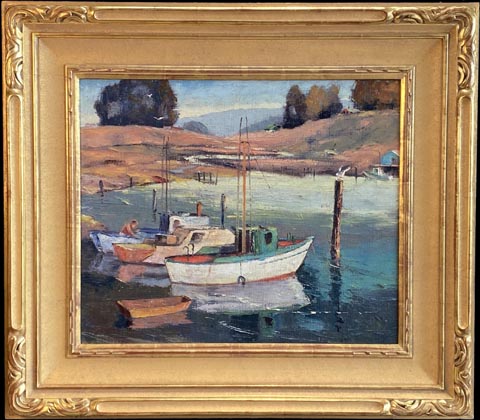 Three Boats by Jon Blanchette |
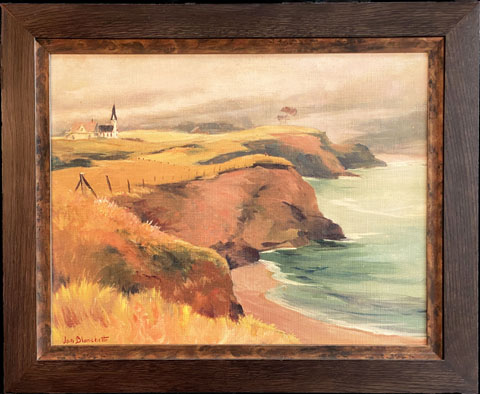 Mendocino Church by Jon Blanchette |
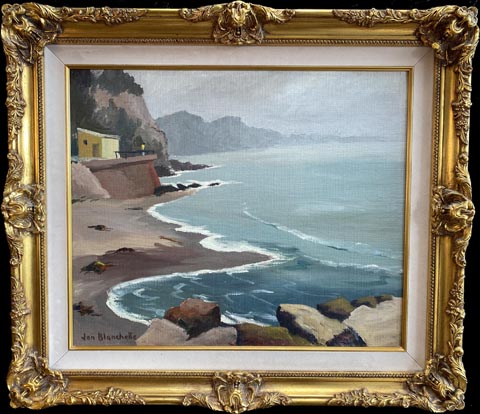 Coast on a Winter's Day by Jon Blanchette |
| Jon Blanchette page on our site | Back to the Top | |
| Gallery Notes | |
 The Flower Carrier, 1935 |
An Exhibition Opportunity for you in San Francisco |
 Tony Dow, 1945-2022 |
|
|
|
| News from Linda Sorensen's Studio |
 |
|
| Linda's ETSY Shop | Linda's website |
| in Bodega Bay | ||
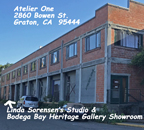 |
Bodega Bay Heritage Gallery Showroom Art Trails 2022 Linda Sorensen's OPEN STUDIO Sat & Sun, Sepember 24-25, 10-5 Sat & Sun, October 1-2, 10-5 open other timese by appointment in Graton or Bodega Bay http://www.BodegaBayHeritageGallery.com | Call or Text 707-875-2911 email: Art@BodegaBayHeritageGallery.com |
 "Mendocino Coast" Joshua Meador |
 Ren Brown |
The Ren Brown Collection 1781 Coast Highway One, Bodega Bay, 94923 707-875-2922 | rbc4art@renbrown.com http://www.renbrown.com | Back to the Top |
 |
Linda Sorensen Paintings LindaSorensenPaintings.com | 707-875-2911 |
 |
|
\ |
Bodega Bay's Jean Warren Watercolors Bodega Bay resident Jean Warren says her paintings are reflections of the places she has lived and traveled. Jean is a signature member of the National Watercolor Society, California Watercolor Association and full member of Society of Layerists in Multi-Media. http://www.JeanWarren.com / 707-875-9240 |
|
| What's nearby? in Sonoma, Napa & Marin Counties |
||
 |
IN SEBASTOPOL - Sebastopol Center for the Arts ... see website for on-line activities home of Sonoma County's Art @ the Source and Art Trails 282 S. High Street, Sebastopol, CA 95472 707.829.4797 Hours when able to reopen: Tue - Fri 10am - 4pm, Sat & Sun 1 - 4pm |
|
 Corrick's Keven Brown |
IN SANTA ROSA Corrick's Art Trails Gallery | http://www.corricks.com/arttrailsgallery 637 Fourth Street, Santa Rosa, CA 95401 | Contact:: http://www.corricks.com/contact-us Corrick's has been a Santa Rosa Treasure since 1915, a downtown stationery store serving the community's "cultural hub." Corrick's has long supported local artists with its impressive "ART TRAILS GALLERY," including paintings by Linda Sorensen. Corricks offers a number of originals by famed Santa Rosa artist, Maurice Lapp ... (see our August 2017 article) located on Fourth Street, steps away from Santa Rosa's revitalized town square and Fourth Street's Russian River Brewery |
 |
 Dennis Calabi |
IN SANTA ROSA- Calabi Gallery | http://www.calabigallery.com We are located at 456 Tenth Street in Santa Rosa. Contact us with any questions at (707) 781-7070 or info@calabigallery.com 456 Tenth Street, Santa Rosa, CA 95401 | email: info@calabigallery.com | 707-781-7070 Famed master conservator Dennis Calabi brings his rare knowledge and experience to present a tasteful and eclectic array of primarily 20th century artwork. http://www.calabigallery.com | Back to the Top |
 Easton, Crustacean Dancing Dream, American Alabaster |
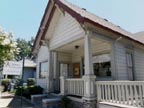 |
IN Santa Rosa - The Annex Galleries specializing in 19th, 20th, and 21st century American and European fine prints The Annex Galleries is a member of the International Fine Print Dealers Association (IFPDA). http://www.AnnexGalleries.com | Back to the Top |
|
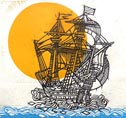 |
IN GRATON - Graton Gallery |
|
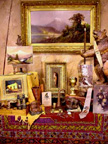 |
IN DUNCANS MILLS - Christopher Queen Galleries 3 miles east of Hwy 1 on Hwy 116 on the Russian River http://www.christopherqueengallery.com |707-865-1318| Back to the Top |
|
 |
IN Healdsburg - Paul Mahder Gallery http://www.paulmahdergallery.com (707) 473-9150 | Info@paulmahdergallery.com 222 Mill Healdsburg Avenue, Healdsburg, CA 95448 | check for hours |
|
 |
|
 |
| Links to current museum exhibits relevant to Early California Art | |||
| The Greater Bay Area | |||
| The Walt Disney Family Museum -- see website for details This museum tells Walt's story from the early days. (on the Parade Grounds) 104 Montgomery Street, The Presidio of San Francisco, CA 94129 -- view location on Google Maps -- |
 |
San Francisco ... see website de Young Museum Permanent Collection |
 |
| San Francisco closed, see website California Historical Society |
 |
San Francisco Legion of Honor ... see website -Permanent European and Impressionist Paintings |
 |
| San Francisco open, see website for details Contemporary Jewish Museum |
 |
Oakland ... see website Oakland Museum of California -- ongoing Gallery of California Art -showcasing over 800 works from the OMCA's collection |
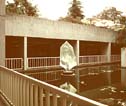 |
San Francisco |
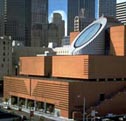 |
Santa Rosa |
 |
| Santa Rosa ... see website Charles M. Schultz Museum |
 |
Moraga |
 |
| Sonoma Mission San Francisco de Solano Museum featuring the famed watercolor paintings of the California Missions by Christian Jorgensen |
 |
Sonoma Sonoma Valley Museum of Art ... see website 551 Broadway, Sonoma CA (707) 939-7862 |
 |
| Ukiah Grace Hudson Museum ... see website http://www.gracehudsonmuseum.org |
 |
Bolinas |
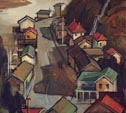 |
| Walnut Creek ... see website The Bedford Gallery, Lesher Center for the Arts |
 |
San Jose San Jose Museum of Art ... see website approximately 2,000 20th & 21st century artworks including paintings, sculpture, new media, photography, drawings, prints, and artist books. |
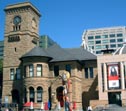 |
| Monterey Monterey Museum of Art ... see website Ongoing exhibitions ... Museums Permanent Collection including William Ritschel, Armin Hansen and E. Charlton Fortune http://www.montereyart.org |
 |
Palo Alto ... see website Cantor Art Center at Stanford University |
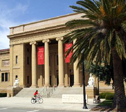 |
Monterey |
 |
Sacramento Crocker Art Museum Open Thurs - Sun, 10-5, masks, ... see websites |
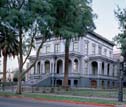 |
| Sacramento Capitol Museum ... see website Governor's Portrait Gallery Permanent Exhibits (including one of our galllery's favorite artists, Robert Rishell's portrait of Gov. Ronald Reagan |
 |
Stockton's Treasure! The Haggin Museum ... see website -Largest exhibition of Albert Beirstadt paintings anywhere, plus the works of Joseph Christian Leyendecker, Norman Rockwell's mentor. see our Newsletter article, April 2011 |
 |
| Southern California (and Arizona) (for all museums below, see website for hours and protocols. | |||
| Los Angeles Los Angeles Museum of Art Art of the Americas, Level 3: Artworks of paintings and sculptures from the colonial period to World War II— a survey of of art and culture & "Levitated Mass" |
 |
Irvine UCI IMCA (University of California, Irvine Institute and Museum of California Art) (formerly The Irvine Museum) The Resonant Surface: Movement, Image and Sound in California Painting ... through Feb 19, 2022 |
 |
| Santa Barbara The Santa Barbara Museum of Art |
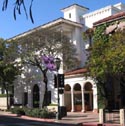 |
Orange Our Golden State: Landscape Paintings from the Hilbert Collection November 9 - April 18, 2022 Hilbert Museum, Chapman University |
 |
| Pasaden Norton Simon Museum -an Impressive Permanent collection, European impressionist and post impressionist paintings See our newsletter from March 2014 |
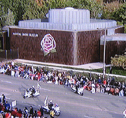 |
San Marino (near Pasadena) The Huntington Library American Art Collection Paintings by John Singer Sargent, Edward Hopper, Robert Henri, Albert Bierstadt, Thomas Moran, William Keith, Mary Cassatt, Thomas Hart Benton and many more. |
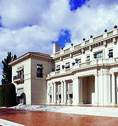 |
| San Diego San Diego Museum of Art Permanent Collection |
 |
Palm Springs |
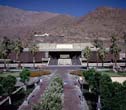 |
| Phoenix, AZ Phoenix Art Museum an excellent sampling of Artists of the American West |
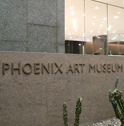 |
Los Angeles California African American Art Museum adjacent to the LA Coliseum (see our newsletter articleof their Ernie Barne's Exhibition September 2019) |
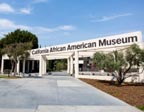 |
| & Beyond | |||
| Honolulu, HI Honolulu Museum (see our Newsletter article from February, 2015) |
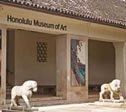 |
Kamuela, HI (Big Island) Issacs Art Center 65-1268 Kawaihae Road Kamuela, HI 96743 (See our Dec '16 article "Hawaii's Paul Gauguin," modernist Madge Tennent, 1889-1972) |
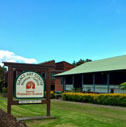 |
| Seattle, WA Seattle Art Museum ( see our article Mar 2018 French and American Paintings ) |
 |
Portland, OR Portland Art Museum Permanent Collection: American Art |
 |
| Washington D.C. The Renwick Gallery Permanent ... Grand Salon Paintings from the Smithsonian American Art Museum |
 |
Chicago, IL Art Institute of Chicago Permanent collection: the Impressionists |
 |
| Cedar Rapids, IA The Cedar Rapids Museum of Art Grant Wood: In Focus is an ongoing permanent collection exhibition. |
 |
Bentonville, AR |
 |
| Washington D.C. The National Gallery Permanent collection American Paintings |
 |
Philadelphia , PA The Philadelphia Museum of Art |
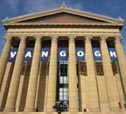 |
| Philadelphia , PA Barnes Foundation, Philadelphia Campus |
 |
Brooklyn, NY The Brooklyn Museum American Art Permanent Collection |
 |
| New York , NY The Whitney Museum of American Art The largest selection of works by Edward Hopper |
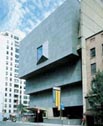 |
New York , NY Metropolitan Museum of Art Its extensive collection of American Art |
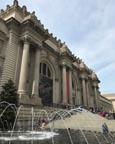 |
| Detroit, MI Detroit Institute of Arts American Art Permanent Collection |
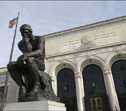 |
Ottawa, Ontario National Gallery of Canada |
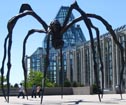 |
| Denver, CO Denver Art Museum |
 |
|
|
|
||||
| For an appointment, email or call ... Art@BodegaBayHeritageGallery.com / 707-875-2911 | ||||
|
||||
|
|
|
||
 |
|
| Bodega Bay Heritage Gallery and Linda Sorensen's studio Bodega Bay Heritage Gallery .com / Linda Sorensen Paintings . com Art@BodegaBayHeritageGallery.com / LindaSorensen@Earthlink.net 707-875-2911 Atelier One, Studio 5, 2860 Bowen St, Graton, CA 95444 (not a mailing address) |
| If you wish to sell a painting to us ... |
|